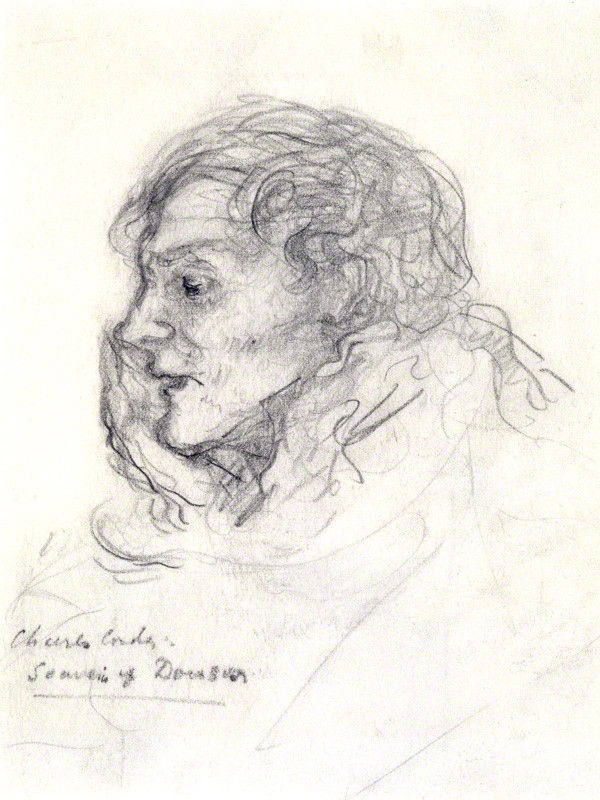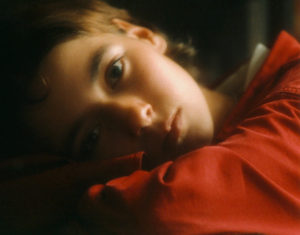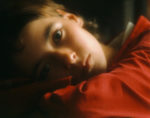
In two previous articles, “Ernest Dowson and the Cult of Minnie Terry” (in Pigtails in Paint) and “Ernest Dowson and the ages of woman” (in this blog), I told that in his youth Ernest Dowson worshipped little girls, in particular the child actress Minnie Terry. But this infatuation remained somewhat on the surface, it did not really move his soul. Indeed, it vanished as soon as he met the true passion of his life, Adelaide Foltinowicz, a girl he nicknamed “Missie” or “Missy.”
As writes Desmond Flower in the Preface of New Letters from Ernest Dowson (page ix):
Throughout his short career, Dowson thought of himself as, above all, a prose writer. His verse he regarded as occasional and trivial. He was in fact a very good writer of prose. But his writing changed significantly when he fell in love with ‘Missie’ — Adelaide Foltinowicz, the daughter of the Polish proprietor of a small restaurant […] In spite of his devotion to prose, it was Missie who inspired his great poetic ability, and the introduction to her of his first volume begins ‘to you who are my verses’.
Let us open Dowson’s volume Verses. We first read the short poem “Vitae summa brevis spem nos vetat incohare longam;” as say the editors Robert Kelsey Rought Thornton and Caroline Dowson, this title comes from the Odes of the Latin poet Horace (chapter I, iv, 3), it means “the short span of our life forbids us to indulge in long-term hope,” and indeed the verses stress the fleeting character of life’s passions. They match Dowson’s short life of ecstasy and despair, and they have been reproduced on a plaque on Dowson’s restored grave.
Then we find In Preface: For Adelaide, starting with the words “To you, who are my verses.” A few lines below we read “For I need not write your name for you at least to know that this and all my work is made for you in the first place, and I need not to be reminded by my critics that I have no silver tongue such as were fit to praise you.”
In early June 1896, when he decided to include this preface, he wrote to Samuel Smith (see The Letters of Ernest Dowson, no. 341, page 367):
But it is too late to convert me now; I am idolatrous for the rest of my days. Idolatrous to the extent that Keats was when he wrote from Rome to his friend Browne: ‘the lining which she put in my travelling cap scalds my head’,—and like Keats I can not open her letters for a day or so after they reach me. […] Go and see my Missie I beseech you: and tell me how she takes my ‘Preface’—if she reads it. I only ask that she does not m’en vouloir for it, and that is a little thing to ask for as absolute an adoration as any girl or woman has ever had from anyone.
The beginning
Now let us start the story. Around November the 1st, 1889, Dowson entered into a cheap Polish “pot au feu” restaurant, located at 19 Sherwood Street in Soho, at the back of the present Regent Palace Hotel. As he wrote to his friend Arthur Moore on November 9, 1889 (Letters, no. 73, page 114):
I discovered it. It is cheap; the cuisine is fair; I am the whole clientele, and there is a little Polish demoiselle therein (Minnie at 5st 7—no not quite that) whom it is a pleasure to sit & look at.
The “little Polish demoiselle” was Adelaide, the daughter of the proprietor Joseph Foltinowicz. Of her full name Ellen Adelaide Mary Foltinowicz, she was born on April 13, 1878, she was thus aged 11 years and a half, while Dowson (born on August 2, 1867) was 22 years old. From now on he would refer to this restaurant as “Poland” and would become a regular customer. Writing to Moore on Christmas Eve (Letters, no. 78, page 121), he said:
I dine there every night now & little Mdlle de Poland is beginning to greet me with a smile.
His friends did not share his commitment to “Poland,” they were fond neither of the food nor of the mood of the place (Letters, no. 82, pages 130-131: To Arthur Moore, January 12, 1890):
I am afraid you were not favourably impressed by Poland. Or rather you were less disgusted with the Pot au Feu character of the cooking than I feared—& didn’t enthuse as much as I expected over la petite personnne who gives it so much local colouring. This is not as it should be. Half the charm of dining there lies in the fact that you are honoured with the conversation—if you are an habitué—of that little lady.
Desmond Flower and Henry Maas write in the Introduction to Part II of Letters (page 127):
At seven he would go, either alone or with friends, to dine in ‘Poland’. If he had no theatre engagement, dinner lasted a long time. If there were others dining with him they would adjourn to the Café Royal or a public house when they had eaten, while Dowson would stay on. As soon as all the other diners, mostly Frenchmen and Poles, had been served, he would coax Adelaide to come and sit at his table. She would come and talk, and sometimes they played cards until about ten o’clock, when her mother called her to go to bed. She was intelligent and vivacious, with dark hair and blue eyes; her face was oval, and her nose a little crooked; she spoke with a slight foreign accent. She had warm colouring and the freshness of youth. During 1890 and 1891 the relations between her and Dowson widened and deepened; his letters to his friends became more and more serious; he was falling in love.
Dowson relinquished his “platonic experiments” with teenage girls (in particular Bertha Van Raalte, whom he courted at the time he met Adelaide), and he would soon forget about Minnie Terry.
The “special Enfant”
Spending almost all evenings in “Poland,” Dowson felt increasingly close to Adelaide, and her friendship had a soothing effect on his heart, as one can read in his letters to Arthur Moore. On February 16, 1890 he wrote (Letters, no. 89, pages 137–138):
I dine almost invariably in Poland now. The atmosphere of the place has the most cheering effect on me. The dear child becomes daily more kind & gracious. The other day she came & sat by me & conversed with great affability all the time I was there. She really is the most quaint & engaging little lady—& she can play fiddle very prettily. […] Certainly the mere friendliness of a child has some such effect on me—seems to me at times to be not merely a set-off against one’s innumerable unliquidated claims against life but a quite final satisfaction of them—an absolute end in itself […] there is after all nothing so important as that one should be constantly trying to multiply these moments & to make them last.
Then on March 4, 1890 (Letters, no. 92, page 140):
La pétite would not allow me to sit in my usual place but led me up above the salt to the fireside table You can imagine how “gratted & flattified” I was. […] She is the most charming little chatterbox & we are quite on a footing of vieils amis by this time.
And on March 28, 1890 (Letters, no. 95, pages 144-145):
I am sure she would be charmed with my little lady. My dinners there now remind me more than anything else of certain hospitable “nursery teas” at which some years ago I was a frequent visitor before my cousins who partook of them had grown up into formidable young ladies. La petite comes & sit by me & paints or talks as a matter of course whenever I have not “company”—and her adoring mama from time to time favours me with anecdotes in most unintelligible English of her amazing qualities & her extreme gentilesse. Children certainly reconcile one—(at least in my case) more than anything else to one’s life but on the whole I am more & more convinced each day that there is nothing really worth doing or having or saying. […] The value of contact with children is chiefly I think that it enables you at least for a time to consider with a sort of mellow melancholy what would otherwise do with extreme bitterness & acrimony.
Her parents let him care for her when she was sick; he wrote on April 8, 1890 (Letters, no. 97, page 147):
La chère petite has been shut up with a cold lately—but yesterday I was taken up to see her & sat with her for some time in an upper chamber while she had her dinner. The patron came & “drank wine” with me (a quaint brand of Port)—& portraits of Adelaide in various periods of infancy were exhibited. It was quite a charming episode & cheered me mightily.
He took Adelaide out to various entertainments: an “Egyptian” scene of magic, a panoramic show of the Niagara Falls, Mme Tussaud’s wax museum and Hengler’s circus; he also sent her the works of Lewis Carroll (see Letters, no. 86, 124, 125, 129, 130 and 133). Being a great amateur of theatre, he brought her there too, as he wrote to Moore on May 19, 1890 (Letters, no. 99, page 148):
W. Herbert […] sent me 2 stallocks for what transpires to be the last matinée of Nixie and I duly repaired there in company with notre petite Polonaise. She seemed to like the play which bien entendu is a werry poor one. “Nixie” is a clever child enough but not as pretty either as Mignon or my little Missy herself. She looked very sweet & charming, though I confess the superior smartness in which she appeared for the occasion did not commend itself to me so much as the familiar black pinafore. We intend to have similar excursions on future occasions.
Here “Mignon” is the nickname given by Dowson to Minnie Terry, his favourite child actress, and the “familiar pinafore” is the one worn by Adelaide when serving customers in her father’s restaurant; Ernest seemed to love it: “My little Frauleinchen was quite too adorable in her pinkest pinafore, & a complexion of milk & roses.” (Letters, no. 105, page 156: June 25, 1890).
A sweet habit was sharing afternoon tea with her: “I went up & had “five o’cloque” with Missy, this afternoon: she was very charming.” (Letters, no. 119, page 168: September 19, 1890); “Also among the delightful things an hour in Poland yesterday for “5. o’cloque.” which I consumed in the salon au premier while Missy & a small French boy played duets very charmingly on two violins.” (Letters, no. 120, page 169: October 9, 1890).
As he rejoiced in the presence of Missie, Dowson felt loss and desolation in her absence. While Adelaide was away, hop-picking in Kent, he wrote to Moore (Letters, no. 111, page 160: August 22, 1890):
Adelaide doesn’t come home till next Wednesday. In the meantime I dine in Poland desolately & listen to extracts from her letters. […] It is very monotonous—but I hope when la chère petite comes back things will improve.
Then on her return (Letters, no. 113, page 162: August 27, 1890):
Missy came back all right looking rosy & prettier than ever & bringing a good scent of hops & roses with her. The effect of her entry was transfusing—we all with one accord became joyous (I have quite become one of the family you know now) and I observed a stolid German cousin who has been staying there for the last month, knitting in a perfectly torpid condition, smile for the first time. Die Kleine more entirely ressembles a sunbeam than anything which I have ever come across. I am still mellow from the interlude.
Could the “German cousin” be Augustus Noelte, a tailor who would marry Adelaide in 1897? After more expressions of his exuberance, the letter goes on:
I will even go back to Rainham & Mary Masters & all the other uninteresting adults one is foolish enough to write about. Why the deuce does any one write anything but books about children! Quelle dommage that the world isnt composed entirely of little girls from 6–12.
Rainham, Mary Masters and “the other uninteresting adults” are the characters of the novel that he was writing with Moore. Here one touches one of the reasons why Dowson, who sought recognition as a prose writer, became in fact known for his poetry. His novels and short stories deal mostly with the world of adults, their dilemmas and choices, sometimes their cowardise or dishonesty, he can also talk about their loves, but even when he speaks in the first person, one can sense that he keeps aloof from their real feelings. His prose took part in the so-called “Decadent” artistic and literary project to break from Victorian moralism and sentimentality, which were viewed as a kind of hypocrisy; some have even seen in his short stories a political revolt against rigid gender roles, see for instance the Introduction by the Editors Monica Borg and R. K. R. Thornton to Ernest Dowson: Collected Shorter Fiction, Birmingham University Press (2003).
On the other hand his poetry expresses his own deep feelings, which stood generally far from the adult world, and often revolved round love, younger girls and children. In this he differed from some other “Decadents;” for instance, the poet Radford, who made a poem about “Labour,” had written to G. A. Greene that “Love being out of date and Religion a thing of the past, the hunting ground of our poets has become exceedingly small.” Then Dowson answered to Greene on November 27, 1893 (Letters, no. 274, page 298):
I shd. have said that Love & Death are almost more permanently with us than the Labour Movement & will probably survive it—& I don’t quite see how the Radicals are going to abolish them.
Indeed, love remains today, as in Dowson’s time, the great preoccupation of many people, who will find an echo of their longings in his poetry.
As most Polish people, the Foltinowicz were Catholic, and Dowson went to admire Adelaide when she participated in processions. He wrote to Moore on October 19, 1890 (Letters, no. 123, pages 172-173):
You ought to have come to N.D. de France tonight. There was a procession after Vespers of the Enfants de Marie & I just managed to discern my special Enfant in spite of her veil, carrying a very big banner & looking as usual extremely self possessed & mistress of the situation. It was a wonderful & beautiful situation: the church—rather dark the smell of incense—the long line of graceful little girls all with their white veils over their heads […] Childrens voices in concert are wonderful! Children’s voices exercised in the “Ave Maris Stella”, are the most beautiful things in the world. What a monstrous thing a Protestant country is!
Then on February 2, 1891 (Letters, no. 133, page 183):
And yesterday at “Notre Dame de France” where I took Johnson, I had the pleasure of observing her, in procession, very charming and demure, & white veiled.
Dowson himself became Catholic, he was received in the Church on September 25, 1891.
Flower and Maas conclude the Introduction to Part II of Letters with the following (page 128):
Though she probably never knew it, Adelaide was the inspiration of almost all Dowson’s best work. During these years the clouds were already beginning to hang upon their relationship, but she remained none the less his chief source of happiness—perhaps the only one.
In the second part of this essay, I will describe Dowson’s fear that his love would be grossly misunderstood, then his hesitation in proposing marriage to Adelaide, which he did at the worst time, and his despair as she rejected his proposal and eventually married another man. They both died soon afterwards, Ernest of tuberculosis and neglect in 1900, and Adelaide of a botched abortion in 1903.
References:
- Ernest Dowson: Verses, in Ernest Dowson Collected Poems, R. K. R. Thornton with Caroline Dowson (editors), University of Birmingham Press (2003). Also in The Poems and Prose of Ernest Dowson, With a Memoir by Arthur Symons, Project Gutenberg Ebook.
- The Letters of Ernest Dowson, Desmond Flower and Henry Maas (editors), Fairleigh Dickinson University Press (1967).
- New Letters from Ernest Dowson, Desmond Flower (editor), The Whittington Press (1984).
- Ernest Dowson and the ages of woman, September 25, 2022.
- Ernest Dowson and the Cult of Minnie Terry, January 8, 2015.
Previously published on Agapeta, 2015/06/12.

